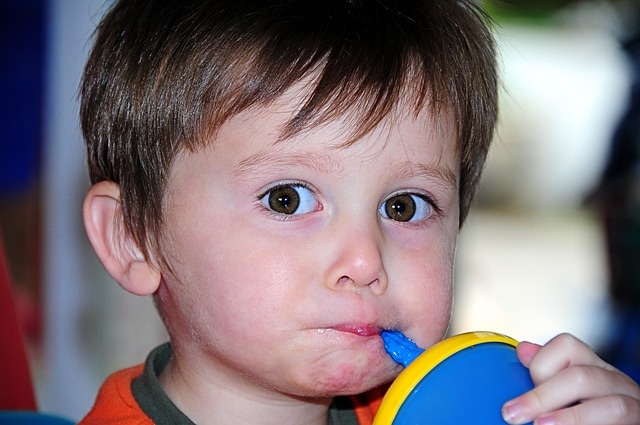I consulted with colleagues who either hadn't noticed it (ugh) or the ones who noticed assigned the problems to attention deficits and executive functioning weaknesses. I appreciated that both attentional and executive functioning issues could be responsible for the problems I saw, but I sensed that there was something more. There is...
Another variable confounding the results lies with the researchers and their level of sophistication with research designs, materials used and statistical analysis (ugh again) which I found disappointing.
So, with those variables in mind, let me list what I found and perhaps it can help you to appreciate the challenges of your family member or friend on the spectrum and create an environment that will allow them to cope with their neurological differences.

There is likely a strong genetic connection because about 4 times as many boys are diagnosed as girls and it is more prevalent in identical twins versus fraternal twins.
Environmental stresses such as pollution, diet and stress play a role.
Researchers generally agree that it arises from a combination of factors.
My issue is with visual perceptual problems.
- Autism is a developmental disorder, so the signs and symptoms can change dramatically over time. Symptoms that you see now may completely disappear due to maturity alone and others may appear as the demands of life increase. This is why we say that those with autism have an "asymmetric developmental pattern".
- Sensory issues were featured in the original description of autism including both hypersensitivity (acute) and hyposensitivity (dampened). The levels of sensitivity often fluctuated between the two extremes.
I want to say right here that it's my experience that this debilitating feature of autism is oftentimes minimized, mostly because school district personnel sit in the interminable meetings and have no recommendations for dealing with it. They can't change the physical nature of the public school with its hard floors, fluorescent lighting, moving of books and chairs and pencils and the breathing and talking of many others. They can't change the essential nature of public school, so they ignore it.
In my office, I took note of the number of accommodations I made in order to make my clients comfortable. I wanted to ensure that I was evaluating their optimal performance and not their performance "under the influence of autism" to the extent possible.
I turned off the lights and opened the shades to let the natural light in. My office had mostly soft surfaces. I allowed them to use pen because they were disturbed by the "scratching" of the graphite against the paper. I allowed them to use whichever pen, including ones they brought with them if they didn't "like" my pens. They could bring whatever they wanted to help them cope with the demands of the assessment. They could wear hats to shield them from the light and from my close proximity to them. They could sit where they wanted, stood if they needed to or lie down on the floor. They took breaks as needed. These kinds of accommodations simply cannot happen in the public school.
| I encountered a number of "visual behaviors". This list (it's not an exhaustive one) of visual sensory symptoms are as follows: Hypersensitivity Focusing on tiny pieces of dust/particles in the air Dislike of bright lights or the dark Dislike of sharp flashes of light Looking down most of the time Covering/closing eyes at bright lights Hyposensitivity Attracted to light Looking intensely at objects or people Moving fingers or objects in front of their eyes Fascination with reflections and/or brightly colored objects Running hands around the edges of objects |
These behaviors are assessed using the Autism Diagnostic Observation Schedule-2nd Edition which is a reason I use it when evaluating those with autism.

Vision researchers (yes, there is such a discipline) have found that those with ASD have difficulty integrating information from multiple sources. Think taking notes and having to reference the board to the paper and back and forth multiple times. Think about how much effort it takes to use charts and graphs to solve math problems.
There is difficulty with depth perception resulting from poorly-developed binocular vision where both eyes should be working together fluidly, but are not.
They usually think from the "parts to the whole" and have to rebuild the concept every time they use it. No wonder many don't develop the higher order thinking skills (top-down processing) for advanced math and interpretation of literature and focus on facts! Making sense to you, isn't it? Yes, it's the "why" behind the "what".
Also, persons on the autistic spectrum react differently to color than neuro-typical individuals. Some have a particular affinity or an aversion to colors. The reaction can be so powerful, in fact, that placing colored overlays on text can enhance reading speed and comprehension or reduce it. It is thought that color causes excitability in the visual cortex.
Verbal ability is closely associated with color naming in young children and "color language can affect the very earliest stages of perception". Their ability to communicate their choices about color is inhibited by their verbal competence. Clearly, they are unlikely to be able to explain their choices. If they prefer an all-green wardrobe, now you understand.
There is some evidence to suggest that difficulties with recognizing objects may represent general abnormalities in visual processing that are the foundation of problems with recognizing faces and facial expressions.
There is a theory that faces are a "special" class of objects and that a dedicated neurological processing system is tasked with interpreting them. Studies were done wherein faces were turned upside down. They are harder for everyone to recognize, but are particularly difficult for those on the spectrum.
For individuals with ASD, they struggle with paying attention to the eye region of the face, but not the mouth region. The eyes are the windows to the soul. It is the area that is important for the expression and interpretation of fear. For those with ASD, they're looking in the wrong place for information about emotion. They need daily instruction to look at people's eyes and not their faces.
For example, my first office was located where a flat street met a street with a serious downhill "run". As I would drive down the hill, I would look at the person waiting to take a right on red from the flat street below me. If they were distracted, I would start slowing down in anticipation of them pulling out in front of me to make their right turn. I assumed they had no idea I was coming. I could not see them looking at me and evaluating their next move.
Over the 12 years I was in that office, the sound of screeching brakes, cars slamming into utility poles knocking them down and the number of "downhill" drivers who crossed the median to avoid the "right on red" turners was astonishing. One situation was particularly tragic as a cement truck crashed head on into "my" UPS delivery man who was stopped at the light waiting to move uphill. The cement truck crossed into his lane and hit him to avoid slamming into the driver making the right on red in front of him. The impact crushed his legs, broke his back and pelvis.
This is one of the reasons I strongly recommended certain of my clients with autism to avoid driving. Between their gaze detection competence and their attentional skills, they were destined to have serious difficulty "reading" the intentions of other drivers. If involved in an accident, the fact that they have ASD was sure to work against them.
Some of my clients were particularly sensitive to changes in my appearance. During an intense period of work, I did not get my hair colored on time. My gray was showing. Within my own family, I referred to it as "my skunk streak". One of my clients who I had evaluated several times previously and who knew me well, became quite anxious and began wringing his hands and catching glances at me from time-to-time. When asked about his obvious distress, he responded, "Miss Claudia. Your hair is two different colors. Does it hurt?" None of my other clients noticed or if they did, it was not distressing to them.
For other clients with autism accompanied by severe anxiety and obsessiveness, it was necessary to inventory my clothing, jewelry, handbag and shoes in order to avoid the lengthy discussions about the changes in my appearance from appointment to appointment.

Early brain overgrowth is likely to be the primary factor. As a result of neural pruning failure (where the brain kills off parts of itself to function more effectively), there are abnormal brain patterning and wiring. As it turns out, there is extensive local connections and the long-range connections are under-developed. Critical neural circuits are disrupted.
Electrical and imaging studies revealed areas that there are "overly-connected" and "under-connected" areas of the brain. Again, the concept of asymmetry.
The dominant theory for the past 25 years was "Theory of Mind" which explained that the central deficit in autism was related to the difficulty in "reading others' minds" in social situations or "mentalizing". This theory has morphed into the Extreme Male Brain hypothesis. Sounds sexist, doesn't it?
The Extreme Male Brain hypothesis involves empathizing and systemizing. The empathizing part involves not only interpreting the feelings, but the feelings must be experienced by the observer. The systemizing part engages the rule-based systems which is more of a scientific or mathematical analysis than emotion. Clearly, an empathizer has a better chance of accurately interpreting and responding to social situations.
We have an opportunity to bring sensory issues, overall, and visual processing issues, specifically, to the forefront of treating and teaching those with ASD. We need to spread the word, learn as much as we can about visual cognition and work with professionals who are willing to teach themselves about the concepts and get creative about real-life exercises parents and teachers can use to enhance these skills.
We need to teach schools how to help our children and make them responsible when they don't.
Do the best you can, but do something. Claudia
Follow me on Facebook at Dr. Claudia McCulloch








